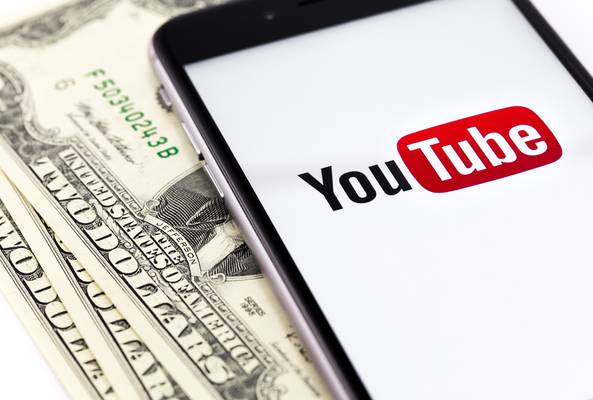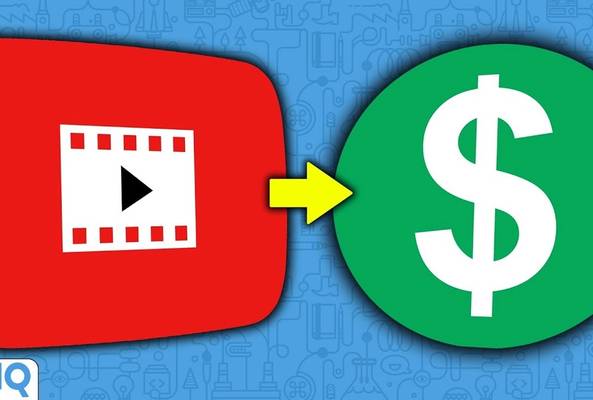Lydia Sweatt is a writer who loves balancing her article/blog time indoors with a healthy dose of nature. She bikes, hikes, and identifies edible plants along the way.
YouTube CPM: 7 Factors Affecting Your Channel's Revenue
JUMP TO SECTION:
- What Is CPM on YouTube?
- 1. The Geographic Location Listed on Your Channel
- 2. The Age of Your Audience
- 3. Your YouTube Niche/Industry
- 4. Seasonal Changes In Your Niche/Industry
- 5. The Type of Ads Placed on Your Videos
- 6. Made For Kids Content
- 7. How ‘Safe’ Your Videos Are For Viewing
Can a YouTube creator’s CPM change for no apparent reason? By studying different channels, we know that CPMs fluctuate all the time. But increases or decreases don't happen randomly; whether your CPM soars to the moon like dogecoin or drops to the ground like a meteor, there’s a specific reason every time.
What Is CPM on YouTube?
CPM (cost per millie) is the amount of money advertisers pay per 1,000 views. So for example, if one of your videos gets 100,000 views and the CPM is $8.50, the video’s total revenue is $850. That's a nice profit, but only a portion of it goes to your bank account. YouTube takes a 45% cut, which leaves you with $467.50. After that, subtract a healthy amount for taxes.
This is a best-case scenario because not every “view” on YouTube is monetized. In the YouTube Studio, there is a metric called estimated monetized playbacks. It shows how many views were actually monetized on your channel.
Take a look at the table below. In this example, the creator has 68,216 views on their channel (for a specific time period). But as you can see, YouTube didn’t monetize all of those views. Only 43,812 views brought in revenue.
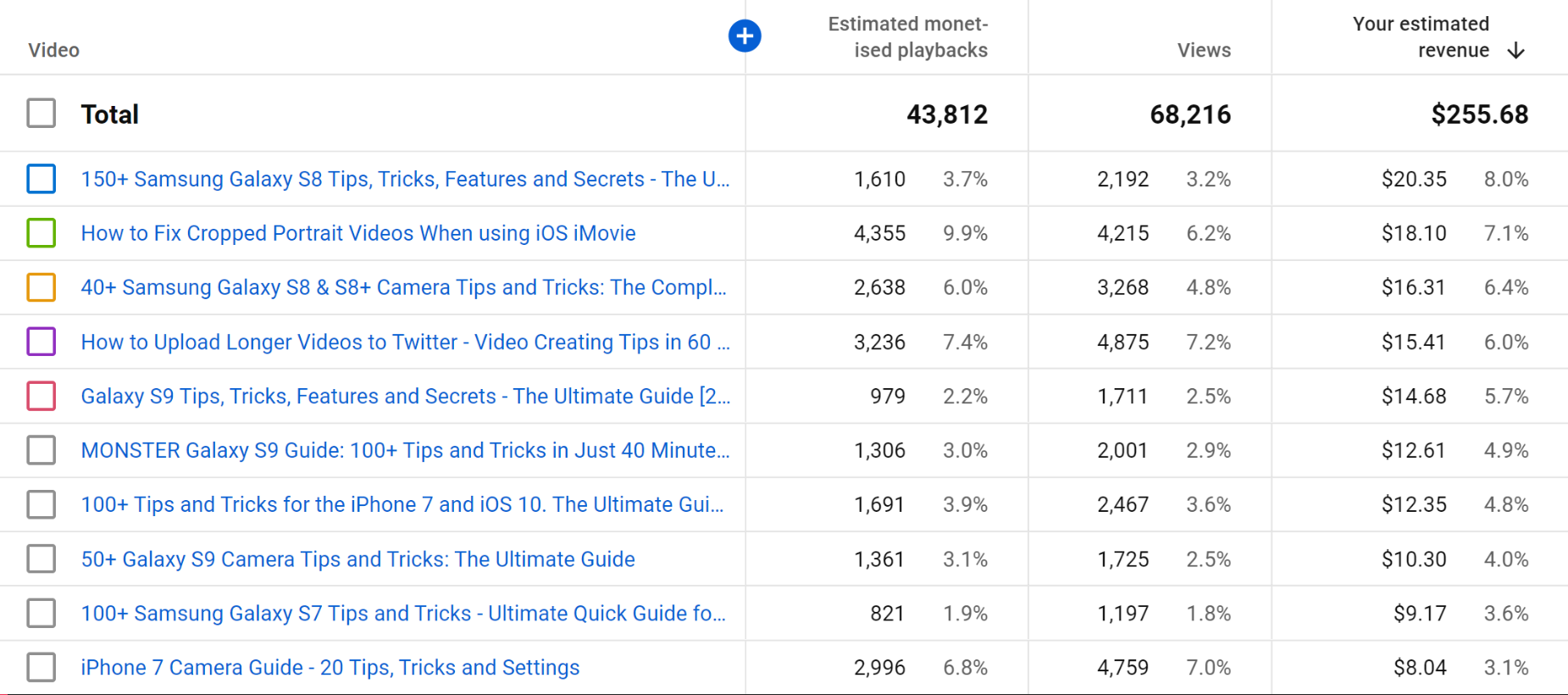
You can find all this data in the YouTube Studio. Go to the analytics page to see your CPM and estimated monetized playbacks.
With that in mind, here are six factors that increase or decrease your YouTube CPM.
1. The Geographic Location Listed on Your Channel
Did you know that where you live determines how much money you make on YouTube? Some countries have a larger economy than others, and that abundance translates to YouTube. If you live in the U.S., this is something you already know. The American cost of living is higher than most countries. Take India, for example. According to Nationmaster.com, the average disposable income is $3,258.85 per month for Americans and $452.11 per month for Indians. That means the average American has seven times more money to spend.

What does this have to do with your YouTube CPM? It simply means companies advertise different products and services on an American channel versus an Indian channel. Those products will likely cost more in the U.S., which means advertisers will pay more to have them appear (as ads) in a video. So you could earn a higher YouTube CPM just by living in a specific country.
2. The Age of Your Audience
Using our example of American income, let's look at the age of your YouTube audience. Your viewers likely fall into one of these ranges:
- 13-17 years
- 18-24 years
- 25-34 years
- 45-54 years
- 55-64 years
- 65+ years
These groups have different income levels. For Americans between 45 and 54, yearly income peaked at $78,879 in 2013. As a result, these older but wealthier Americans spent more money (about $60,524) than other groups. And remember what we said earlier: Advertisers want to be where the money flows.
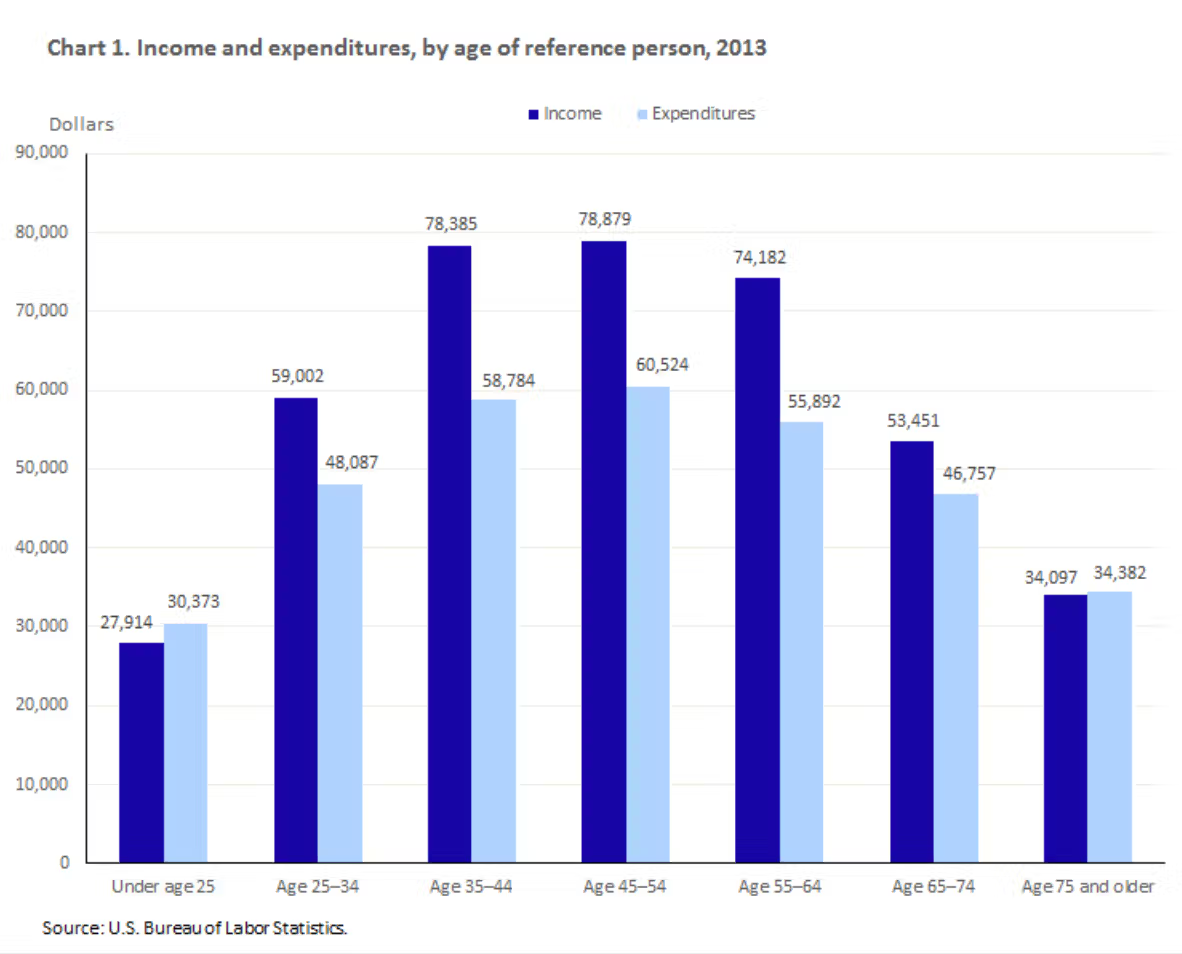
Now, compare that to the income of Americans under 25. In the same year, they only made $27,914.
Let’s say you have a gaming channel, and your audience is American teenagers. Because this demographic has less spending power, there’s a chance advertisers aren’t paying high CPMs to market their products in gaming videos. This means your CPM could be lower than a channel focusing on middle-aged Americans. That’s a broad generalization, obviously. But on a basic level, this methodology is why some creators make more money than others.
3. Your YouTube Niche/Industry
What are the most profitable topics on YouTube? According to research by creator Marina Mogilko, seven niches make the cut:
- health
- business
- investing
- auto reviews
- real estate
- insurance
- online marketing
This data was collected by studying CPMs in different niches across Russia, the U.S., Canada, the UK, Germany, Australia, and India. Take a closer look below.

Are you starting to see a trend? Topics like investing, health, and real estate don’t attract every viewer on YouTube. Most viewers don’t think about these areas of life until they’re approaching 30 or reach a higher salary. That’s why your YouTube niche, among other things, affects your CPM.
Want to learn more about CPMs? Read this post to learn how one creator made $200,000 per month in advertising revenue.
4. Seasonal Changes In Your Niche/Industry
In addition to geographic location, age of the viewer, and YouTube niche, seasonality affects your CPM. Our YouTuber-in-residence, Rob Wilson, had a tech channel before joining the team and knows how AdSense revenue can fluctuate.
“CPMs for tech channels go through the roof as we approach Christmas,” Wilson says. “It’s the gift-buying season, and people are making purchasing decisions when they’re watching tech content. However, the moment we leave the holiday season, CPMs tank on those channels for a couple of months…. then we’re in the New Years’ Resolution season, where food and fitness channels see their CPMs rise.”
5. The Type of Ads Placed on Your Videos
Now that we’ve discussed other CPM factors, let's talk about something you can control: the type of ads placed on your videos.
When your channel finally gets monetized, your first thought is probably, “I’m going to put every type of ad on my videos – display ads, overlay ads, sponsored cards, non-skippable ads. Everything.”
Read More: Google AdSense 101 - How to Benefit from Ad Revenue on YouTube
But did you know that CPMs vary across ad types? You can see these figures by filtering for Ad Type in the YouTube Studio.
Check out the image below. For a particular piece of content, video ads commanded a higher CPM than display ads. That’s because viewers can’t easily escape a video advertisement. But a small graphic at the bottom of the frame? That’s easy to ignore or make disappear with one tap.
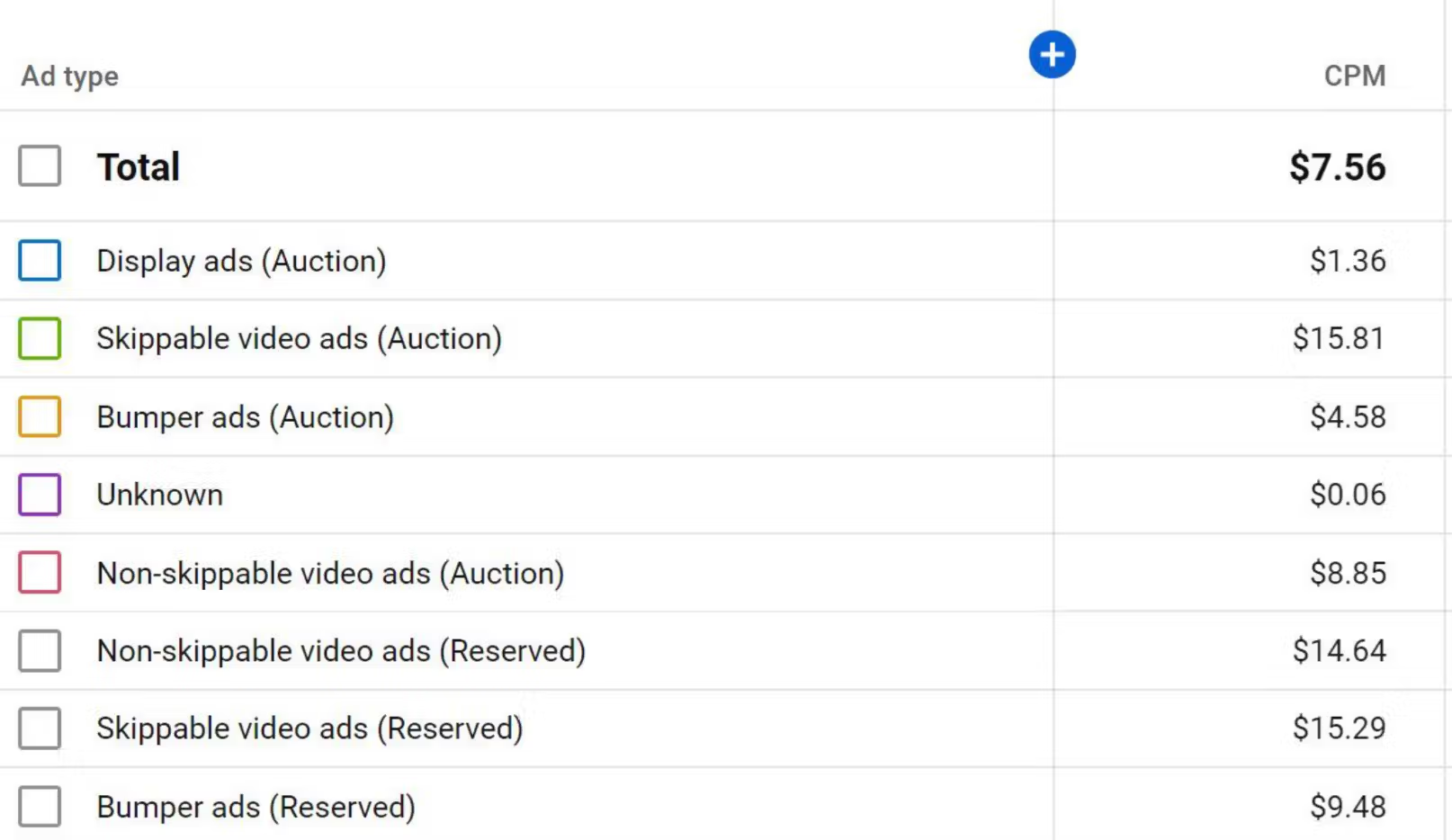
6. Made For Kids Content
A couple of years ago, YouTube was fined $170 million for violating the Children’s Online Privacy Act. This law states that websites can’t collect personal information from users under 13 years of age.
What does that mean for you? If you’re a “made for kids channel,” it essentially means you’ll make less ad revenue. YouTube isn’t allowed to collect personal interest data for most children. As a result, those views don't see targeted ads they’re likely to click.
Read More: COPPA, FTC, and Your YouTube Channel
Advertisers know this, and they aren’t willing to pay top dollar for ads placed on content with “limited revenue." So if you have a kids channel, that's another factor driving your YouTube CPM way down.
7. How ‘Safe’ Your Videos Are For Viewing
Do your videos show adult content? How about guns and violence? On YouTube, these are CPM killers. For the most part, advertisers want to market their products on positive, PG-13 videos. So anything that falls outside of that will result in limited monetization and lower CPMs.
YouTube’s list of non-advertiser-friendly topics is lengthy. See the image below for every category.

When in doubt, follow YouTube’s Community Guidelines to keep your channel in good standing and earn the highest possible CPM.
CPM is an advertiser-focused metric. If you want to see your income after all YouTube deductions, read this post about RPM.

